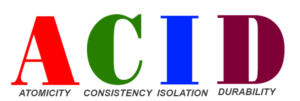
Cockroach Snags $87 million to Grow Cloud Database Biz

via Shutterstock
Cockroach Labs founder and CEO Spencer Kimball has a gaudy goal: to have CockroachDB power the next generation of Ubers and Googles. With today’s $86.6 million Series D funding round complete, he’s one step closer to reaching that goal.
CockroachDB is an open source relational database that Kimball and his two fellow Cockroach Labs co-founders, both former Google engineers, built from the ground up to run in a distributed manner. That wasn’t easy, especially when transactional consistency in a geographic dispersed environment must be maintained. It’s even tougher when you’ve restricted yourself to commodity X86 servers.
It’s been a long, hard slog, as database development typically is. But with the most technical part of the development journey behind it, Kimball says the database is now ready to take on the toughest real-world challenges, and to embrace the challenge of keeping the next generation of global, cloud-based applications fed with data.
Only a handful of companies have managed to solve the global data architecture challenge, according to Kimball. Uber, Netflix, Google, and Facebook are renowned for their engineering talent. But the commitment in time and resources required to develop a custom global data architecture is simply not scalable.
In a nutshell, that’s the challenge – and the opportunity — that Kimball and his team are chasing. “Can we bring that technology and democratize it?” he asks rhetorically. “The answer is yes.”
A Local Experience
According to Kimball, the driving factor behind the global data architecture concept is the desire to store data in a centralized manner, which bolsters developer productivity. But that database must be spread out globally to give customers around the world a localized experience.
That sounds easy enough to do, but it’s anything but.
Take a hypothetical American tech startup that wants to service customers in Australia. The company could run in Amazon Web Service’s US -East-1, which is a data center in Virginia. But that complicates things for the Aussies.
“To give a customer in Australia a local user experience, you can’t have the request have to go all the way to Virginia, where your monolithic application stack and your monolithic database sit,” Kimball tells Datanami.
“In the past, companies have solved that problem by creating a silo of their service for Australian users,” he continues. “But no startup wants to do that right now. It’s not really feasible in terms of cost. And big comparing increasingly don’t want to do it. It’s not the right architecture. It’s not a holistically global service. And the Australian users are all by themselves and the US users are all by themselves. It’s not a good cost structure in terms of scaling it for new markets, and it’s particularly bad for the users who move between these things, and if there’s any interactivity in whatever the service is, the application developers have to build linkages between the different silos and it’s very complex.”
A more elegant answer is to maintain all of the data in the same logical database, and to allow that database be distributed geographically around the world. The NoSQL database vendors have achieved that by sacrificing some of the tenants of ACID, namely around data consistency. For a transactional database, however, the ACID precepts can’t be compromised, which leads to the problem.
Cockroach Labs solved the data consistency problem by adopting the RAFT consensus algorithm and building a multi-version consensus control (MVCC) system into the database, which is wire-protocol compliant with Postgres. The end result is that the database is able to maintain consistency between nodes, even if they’re located thousands of miles apart.
“That’s an intensely difficult problem, especially when you start to add geographic latency, which we think will become the new normal,” says Kimball, who is a 2020 Datanami Person to Watch. “We spent years in R&D tackling that problem and getting these latencies to where they’re tractable.”
The Next Uber
Cockroach Labs isn’t the first database company to challenge established heavyweights in the $55 billion market for relational database management systems. Companies that have licenses to Oracle’s database, IBM’s Db2, and Microsoft’s SQL Server aren’t going to change databases overnight. The stickiness of a database is directly proportional to how important it is to a business, and transactional databases for the Fortune 500 are incredibly valuable.
Kimball isn’t holding his breath that Oracle and Db2 users are going to switch to an upstart database company like Cockroach Labs overnight (although he does think they eventually must shift database to deal with the need for a global data architecture).
CockroachDB has been available for just two years, and it’s already scored some blueblood customers, such as Comcast and Bose. The company points out that Tesla, Apple, and Facebook are all looking for developers with CockroachDB skills.
The enterprise accounts may take time, but in the meantime, Kimball has his sights set attracting the next generation of hot-shot startups to his new database. Like his co-founders, Peter Mattis and Ben Darnell, many of these up-and-comers spent time at Google, and some hail from Uber.
“In all the cases, these startups are choosing to build global applications from the get go, because they have those kinds of ambitions,” he says. “These are the cool kids.”
These folks developed their apps to run in the cloud, but are quickly growing tired of re-platforming and refactoring them to achieve scale. They’re choosing CockroachDB, he says, because they want a global data architecture to build upon.
Prepped for Growth
As the Bay Area enters the seventh week of the COVID-19 lockdown, there are questions about whether things will return to “normal.” At the company that is named after the one creature that’s expected to survive a nuclear holocaust, the answer appears to be no.
The Cockroach folks are betting that the shift to the cloud will be permanent, and they are making plans accordingly.
“It’s just inevitable that there’s going to be a decision point in virtually every company out there around what’s the next SQL database,” Kimball says. “How is it going to be consumed? Are we going to run it on promise, or are we going to run it as a service?”
Developers can get started with the database for free at Cockroach Cloud, which runs on AWS and Google Cloud. And as the data and the business value of that data grows, they can move up to an enterprise version that brings stricter SLAs across all aspects of the database.
With $195 million raised to date, the New York City-based company is ready to take the next steps in building its clients global data architectures, whether they’re on-prem or in the cloud. Kevin Wang, a partner at Altimeter Capital, which co-led the round with BOND, is bullish on Cockroach Lab’s cloud prospects.
“Legacy players have long dominated the enterprise software market. With recent investments in companies like Confluent, Snowflake, and now Cockroach Labs, we’re seeing huge market disruption as enterprises move to the cloud and build on a modern tech stack, replacing legacy companies, who are struggling to adapt,” Wang stated in a press release. “Cockroach Labs is leading this next evolution with a world-class team, ambitious vision, and a transformative product. It’s a great time to be in the cloud business.”
Related Items:
Cockroach Labs Ready for Primetime with Scale-Out Database
Re-Imagining Big Data in a Post-Hadoop World
Object Stores Starting to Look Like Databases
































